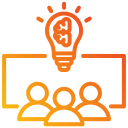Build a Portfolio That Tells a Transition Story
Start with context and constraints, then show your research, options considered, and final decisions. Add outcomes, reflections, and what you would do differently next time. This structure proves growth, humility, and the ability to collaborate toward results.
Build a Portfolio That Tells a Transition Story
Align your portfolio, LinkedIn, and bio with your pivot statement. Pin your best transition-ready work, archive distracting pieces, and add a short personal note about why you are moving. Consistency reduces confusion and increases recruiter confidence quickly.





